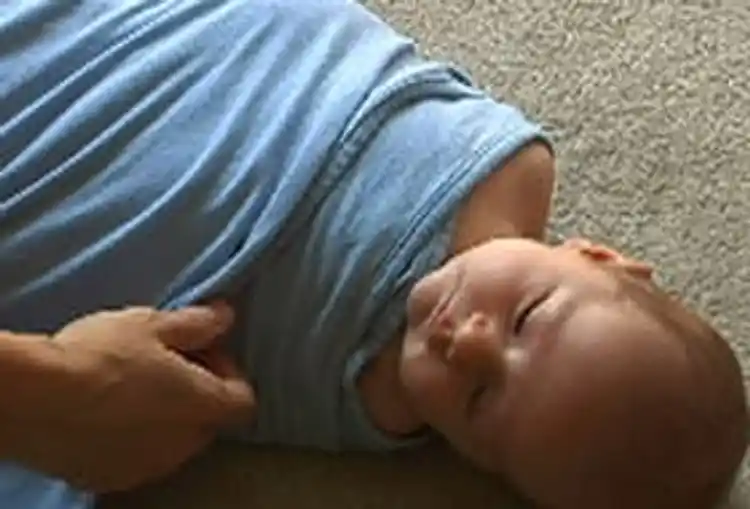Swaddling

Hide Video Transcript
Video Transcript
Kimberly Manning, MD
It's no wonder babies leaving the warm, protected environment of a mother's womb put up a bit of a fuss. Swaddling is a simple way to help them transition. We'll show you how it's done step by step. : One of the challenges following guidelines that all healthy babies sleep on their backs is that infants have little or no control over their reflexes. So when they inevitably startle, little arms flail about – disrupting their precious sleep. Swaddling keeps infants in a cozy cocoon and they are better able to settle in and stay asleep.
: Here's the right way to wrap your baby. Arrange the baby's blanket in a diamond shape on a safe, flat surface; Fold the top corner down almost to the middle; Place the baby down, on top of the blanket, positioning the arms close to the body; Fold one side corner over and across the shoulder – tucking the it tightly underneath; Next pull the bottom corner of the blanket up and over the baby; Finally wrap the remaining flap over and across the other shoulder and tuck it snugly under the opposite side of the baby.
: There are many variations to the method, so experiment to find the one that works best for you. Just be careful to avoid these common mistakes: Wrapping too loosely– the blanket can pop open and can cause a smothering hazard. Swaddling with arms up or bent can allow little extremities to break free. Having the blanket touch the face or cheek can trigger the rooting reflex and frustrate the baby. And it's very important to allow the baby's legs and hips to move—wrapping too tightly can lead to hip dysphasia.
: Being all bundled up is a comforting prelude for baby to sleep and become accustomed to the comforts of home. For WebMD I'm Dr. Kimberly Manning.

